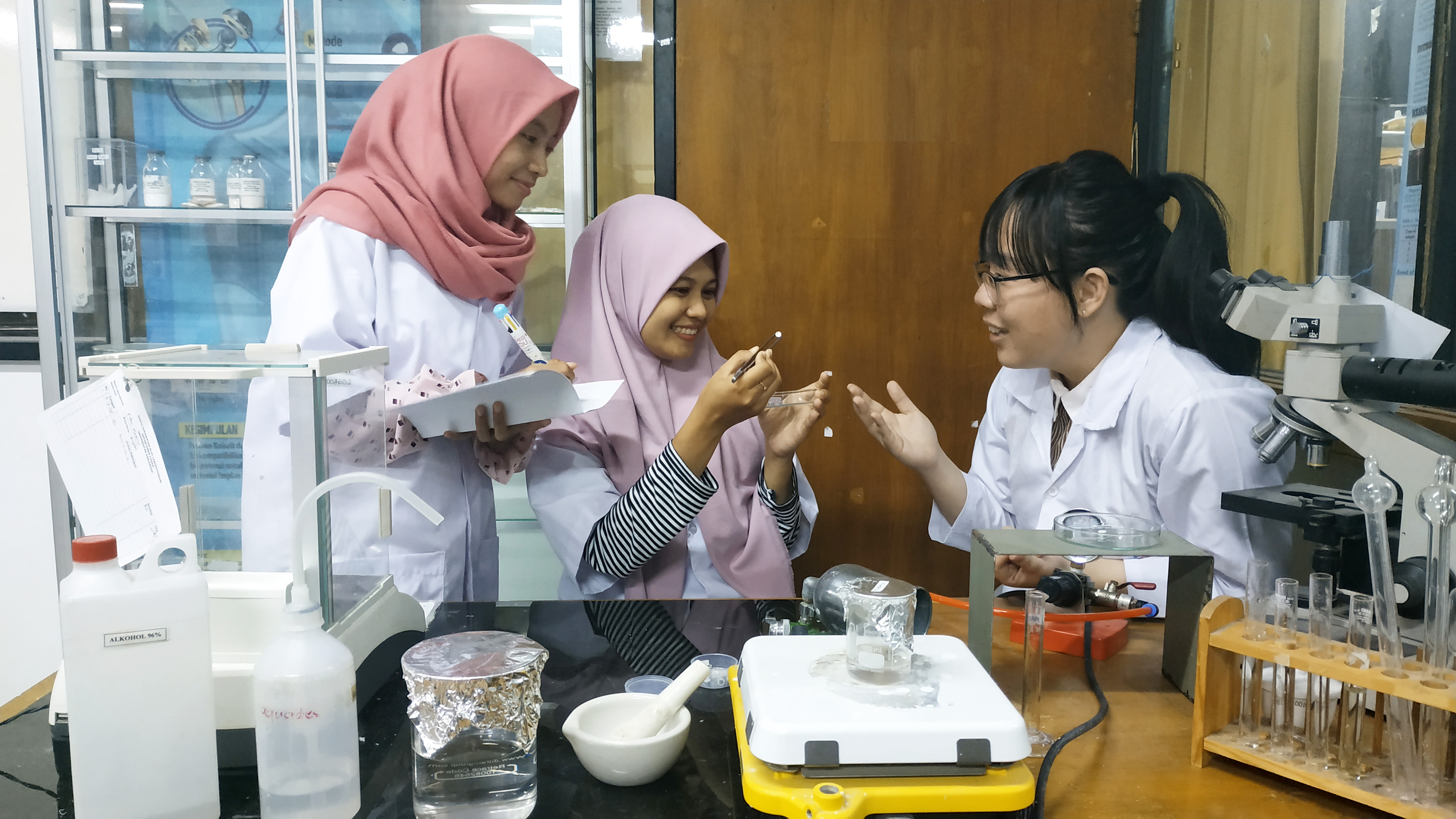UNAIR NEWS – As a country prone to natural disasters, Indonesia has numerous cases of injuries and deaths. One type of cases is of bone fractures that cause a bone discontinuity. Bone fractures may cause physical disability, psychological stress, and even death due to improper handling. Proper treatment must be carried out, especially because the bone is a very important part of the human body as support.
The cases of bone fractures inspired three students of Faculty of Science and Technology Universitas Airlangga, Alfia Fristiyanti (Biomedical Engineering, 2015), Siti Maratus Salasatun Nikmah (Physics, 2015) and Katherine (Biomedical Engineering, 2016), that bone implantation is an effective solution to deal with fractures. Therefore, the three students submitted a proposal for the Exacta Student Creativity Program (PKM-PE) entitled “In-Vitro Cell Proliferation and Differentiation in SS316L Hydroxyapatite Gelatin-Coated Bone Implants”.
With a grant provided by the Ministry of Research, Technology and Higher Education through PKM program in 2018, the three students developed the idea at Material Physics Laboratory, Faculty of Science and Technology. According to Alfia Fristiyanti, the main key to the success of bone implantation is the use of the right material for handling bone damage.
“Materials used as bone implants must have several characteristics such as non-toxic, with excellent mechanical properties, biocompatible, high porosity and may not cause rejection in the patient’s body,” she explained.
One material that is often used as a bone implant, she continued, is SS316L with strong mechanical properties. However, the material is a metal that has low biocompatibility, which can cause an inflammatory reaction around the implant tissue and will be very dangerous for the body.
“Therefore our team tried to coat the SS316L with a biocompatible material with the body, hydroxyapatite-gelatin composition,” explained Alfia.
According to Alfia, both of these coatings can cover the shortcomings of SS316L bone implants because the combination of these two materials has excellent biocompatibility and corrosion resistance. The method of spray coating selected as the method of hydroxyapatite coating on metal SS 316L.
“We choose this coating method because the process is simple and short with a cost lower than other methods,” she said.
In the end, to ensure the quality of the material, a test was conducted using an in vitro study showing several molecular and cellular events on the surface of the tissue/implant. The results in the form of differences of cell morphology, differentiation, and cell proliferation will determine the compatibility of the material as bone implants later.
“Hopefully the implant material has good mechanical and biological properties for bone implant applications,” she concluded.
Author: PKM-PE Team ” In-Vitro Cell Proliferation and Differentiation in SS316L Hydroxyapatite Gelatin-Coated Bone Implants”
Editor: Nuri Hermawan





